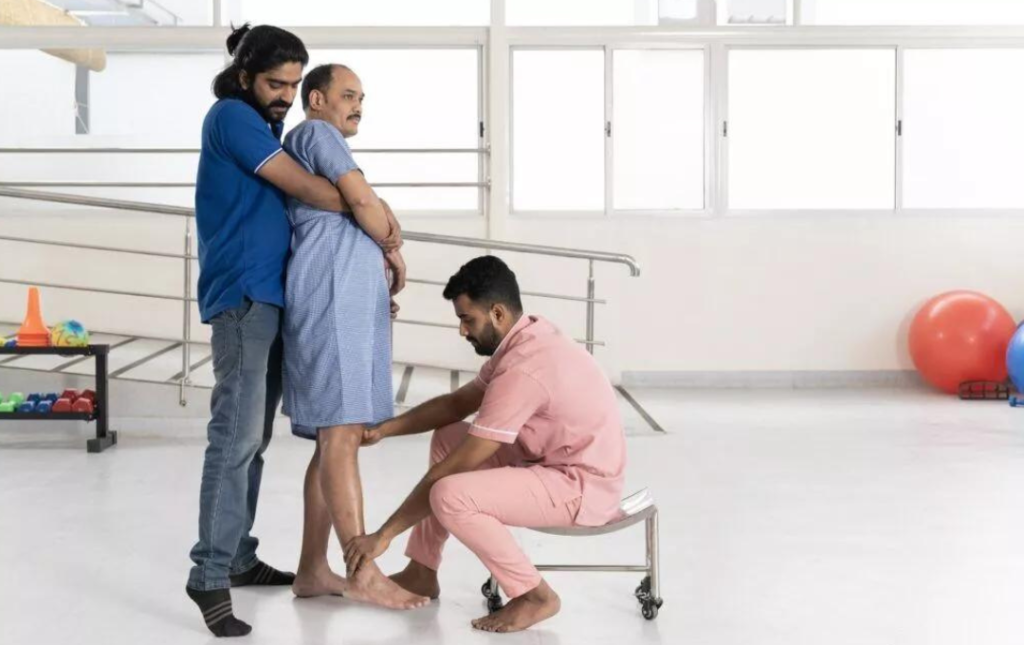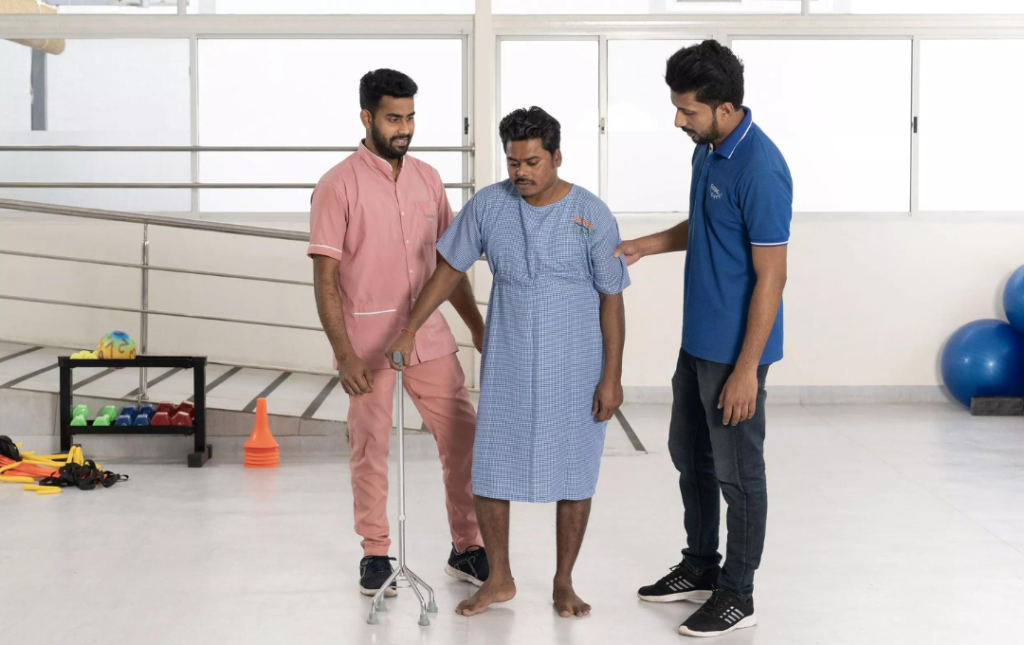Neurological disorders can have a profound impact on an individual’s quality of life, affecting their mobility, coordination, and overall physical well-being. In the journey toward recovery and improved functionality, physical therapy plays a pivotal role in neurological rehabilitation. Through targeted techniques and exercises, physical therapists help individuals regain control over their bodies and navigate the challenges posed by various neurological conditions. In this blog, we will delve into the crucial aspects of physical therapy in neurological rehabilitation, explore the role of a physiotherapist in this field, discuss neurological rehabilitation physical therapy techniques, and highlight the numerous benefits it brings to individuals with neurological conditions.
Role of a Physiotherapist in Neurological Rehab
Neurological rehabilitation is a specialized field that demands expertise, patience, and a deep understanding of the complexities of the human nervous system. Physiotherapists, trained professionals in this area, play a pivotal role in guiding patients through their recovery journey. These specialists work closely with individuals who have suffered from neurological disorders such as stroke, traumatic brain injury, spinal cord injury, multiple sclerosis, Parkinson’s disease, and more.
Physiotherapists begin by conducting thorough assessments to understand the specific challenges and limitations faced by each patient. They design personalized treatment plans that cater to the individual’s unique needs and goals. These neurological disorder physical therapy programs often include a combination of physical therapy exercises, manual techniques, and other interventions tailored to address motor impairments, muscle weakness, coordination issues, and sensory deficits.
Techniques of Physical Therapy in Neurological Rehabilitation
Physical therapy in neurological rehabilitation employs a variety of techniques aimed at improving mobility, balance, and overall functional capacity. These techniques are carefully chosen based on the patient’s condition and progress. Some commonly used techniques include:
1. Functional Electrical Stimulation (FES): FES involves the use of electrical currents to stimulate weakened muscles, promoting muscle contractions and improving strength and function.
2. Constraint-Induced Movement Therapy (CIMT): This technique involves restricting the use of the unaffected limb to encourage the use and recovery of the affected limb, enhancing motor skills and coordination.
3. Gait Training: Physiotherapists work on correcting walking patterns and improving balance to enhance a patient’s ability to walk independently.
4. Task-Specific Training: Patients engage in activities that replicate real-life tasks, helping them regain functional abilities and promoting neural reorganization.
5. Mirror Therapy: Mirror therapy involves the use of a mirror to create the illusion that the affected limb is moving normally. This technique can help improve motor control and reduce pain in conditions such as stroke-related hemiparesis.
6. Virtual Reality (VR) Training: Virtual reality technology is increasingly being integrated into neurological rehabilitation. VR exercises provide an engaging and immersive environment where patients can practice movements, improve coordination, and regain functional skills in a controlled setting.
7. Proprioceptive Neuromuscular Facilitation (PNF): PNF techniques involve patterns of movement and stretching that target specific muscle groups. This approach helps improve muscle coordination, strength, and flexibility.

Benefits of Physical Therapy for Neurological Conditions
The benefits of physical therapy in neurological rehabilitation are far-reaching and can significantly impact a patient’s life:
1. Improved Mobility: Physical therapy helps individuals regain mobility, enabling them to perform daily activities and lead more independent lives.
2. Enhanced Muscle Strength: Targeted exercises and techniques help strengthen weakened muscles, enhancing overall physical strength and endurance.
3. Better Balance and Coordination: Physiotherapy interventions work on improving balance and coordination, reducing the risk of falls and injuries.
4. Pain Management: Physical therapists employ techniques to manage pain and discomfort associated with neurological conditions.
5. Neuroplasticity Promotion: Through carefully designed exercises, physical therapy encourages the brain to rewire itself, promoting neural plasticity and aiding recovery.
6. Increased Confidence: As patients make progress in their rehabilitation journey, their confidence and self-esteem often improve, positively impacting their mental well-being.
7. Enhanced Cognitive Function: It involves exercises that challenge cognitive abilities, promote physical recovery and stimulate cognitive functions such as attention, memory, and problem-solving.
8. Reduction in Spasticity: Physical therapists employ techniques to manage spasticity, enhancing muscle flexibility, reducing discomfort, and improving ease of movement.
9. Prevention of Secondary Complications: Secondary complications such as pressure sores, contractures, and respiratory issues can be addressed by physical therapy.
10. Social Interaction and Emotional Well-being: The supportive environment of therapy sessions foster a sense of community and belonging, which can be particularly beneficial for those dealing with neurological challenges.
Neurological Physical Therapy Exercises
Neuro rehab physiotherapy exercises are a cornerstone of the rehabilitation process. These exercises are tailored to the patient’s condition and may include:
1. Range of Motion Exercises: Gentle movements that help maintain joint flexibility and prevent stiffness.
2. Strength Training: Targeted exercises to build muscle strength and improve overall functional capacity.
3. Balance and Coordination Exercises: Activities that challenge balance and coordination, helping individuals regain stability.
4. Functional Tasks Practice: Engaging in tasks like getting dressed, cooking, or using utensils to promote independence.
5. Aquatic Therapy: Water-based exercises provide a supportive environment for movement and muscle strengthening.
Physical Therapy for Brain Injury Recovery
One of the most crucial areas of neurological rehabilitation is brain injury recovery. Physical therapy plays a vital role in helping individuals regain lost abilities and relearn essential skills. Whether the brain injury resulted from trauma, stroke, or other causes, physiotherapists work closely with patients to facilitate healing and recovery.
Best Practices for Neurological Physical Therapy
For optimal results, neurological rehabilitation specialists follow best practices that include:
1. Individualized Care: Each patient’s condition is unique, requiring personalized treatment plans that address their specific challenges.
2. Progressive Approach: Treatment plans are designed to evolve as patients make progress, ensuring continued improvement.
3. Collaborative Care: Physiotherapists collaborate with other healthcare professionals to provide comprehensive care.
4. Patient Education: Educating patients and their caregivers about exercises, techniques, and strategies for continued improvement.
5. Setting Realistic Goals: Working with patients to set achievable goals that provide motivation and a sense of accomplishment.
Conclusion
The role of physical therapy in neurological rehabilitation is invaluable. Physiotherapists bring expertise, dedication, and a personalized approach to help individuals with neurological conditions regain their physical abilities and independence. Through a combination of techniques, exercises, and best practices, physical therapy paves the way for improved mobility, enhanced quality of life, and renewed hope for those on the path to recovery from neurological disorders.
We are India’s first comprehensive continuum care provider. We provide multidisciplinary out of hospital care to acute and post-acute and chronically ill patients at our critical care facilities and your home.

